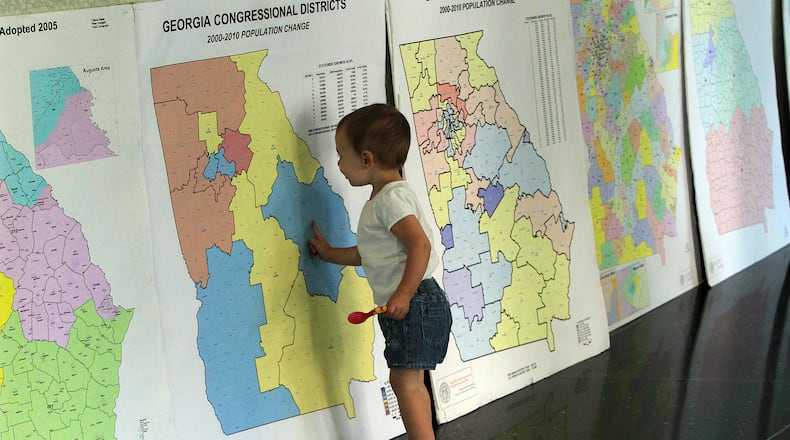A Princeton University study of Georgia’s population found that the partisan gap between the state’s legislative and congressional districts has narrowed, with several seats potentially having competitive races next year.
The Princeton Gerrymandering Project and nonprofit Fair Districts GA partnered on the study, released Thursday, that they say provides “fairness benchmarks” for partisan balance, minority representation and competitive districts. The groups define fair maps as those that respect voters’ political preferences and allow for competition, reflect Georgia’s diversity by creating some districts made up of a majority of nonwhite voters, and keep like-minded communities together.
“The partisan gap is very clearly narrowed, and we are much closer to a swing state across all three maps,” Fair Districts GA Chairman Ken Lawler said, referring to state House, Senate and congressional districts.
A spokesman for state House Speaker David Ralston, R-Blue Ridge, declined to comment on the study.
Every 10 years, legislators are required to set new boundaries so that each district represents roughly the same number of people. This year lawmakers will have to account for Georgia’s 1 million increase in population since 2010, most of which occurred in metropolitan areas while rural population shrank. Lawmakers will return to the state Capitol this fall to draw those maps.
In their study, the groups created 1 million simulated maps for the state House, Senate and congressional districts while taking into account the state and federal redistricting guidelines, such as drawing districts that encompass roughly the same population and are contiguous.
According to the study, more than 98% of the simulated maps created between 28 and 32 Republican-leaning state Senate districts and between 24 and 28 Democratic districts in the 56-member chamber. Between one and seven of those districts could have competitive races, and at least 16 districts would have a majority of Black residents.
That’s a narrower partisan gap than found when studying the 2010 U.S. census numbers. In 2011, the analysis found that between 35 and 39 Senate districts leaned Republican, while between 17 and 21 seats leaned Democratic. There are currently 34 Republicans and 22 Democrats in the state Senate.
In the state House, the simulated maps created between 92 and 99 Republican-leaning districts and between 81 and 88 Democratic districts. Between nine and 22 districts of the chamber’s 180 seats could have competitive races. The study predicts there will be at least 48 majority-Black districts and one majority-Hispanic district, a first for Georgia.
In 2011, simulated maps found between 110 and 119 Republican districts and between 61 and 70 Democratic districts. There are 103 Republicans and 76 Democrats currently serving in the state House. One seat is vacant.
The study predicts there could be eight or nine Republican congressional districts and five or six Democratic districts drawn. Up to three of those districts could be competitive, and four could have a majority of Black residents.
“We see opportunities for increased minority representation, not only for Black voters, which was the traditional way of looking at it, but also we see the growth of Hispanics and Asians and others,” Lawler said.
The state’s increasing diversity, with the white population shrinking to 50%, will pose a challenge for Republican lawmakers trying to create favorable districts. Statistically, white voters tend to support Republican candidates, while a majority of nonwhite voters support Democrats. Legislators must comply with the federal Voting Rights Act, which prohibits racially discriminatory maps that dilute the ability of Black voters to elect Black candidates.
About the Author
Keep Reading
The Latest
Featured



